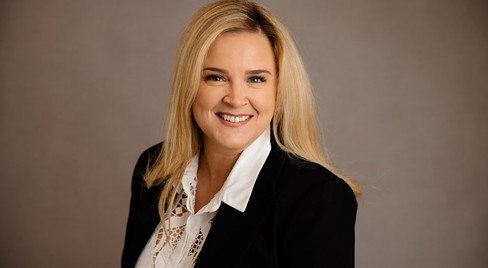R&D tax relief is having a moment of reckoning. In an effort to keep money in the pockets of innovative UK companies, HMRC have unleashed a series of updates with an emphasis on compliance and simplification. Whether this is your first claim or your twentieth in a row, the changes to the R&D tax schemes affect everyone.
Here’s what you need to know.
What is the merged scheme?
The Research and Development (R&D) Tax Relief Merged Scheme replaces the existing Small and Medium Enterprise (SME) and R&D Expenditure Credit (RDEC) schemes.
It’s a generous tax relief for innovative UK companies that gives back up to nearly a third of eligible R&D costs. R&D expenditure includes money spent directly or indirectly seeking to advance the field of science or technology. Companies that seek to improve the state of the art by developing new or improved products, processes, methods, materials or services may be able to claim.
The merged scheme will largely follow in the footsteps of the RDEC scheme, with some key exceptions in costs claimed and rates.
When does the merged scheme come into effect?
The scheme applies to all companies with an accounting period beginning on or after 1st April 2024.
Companies are not able to choose to claim through the SME or RDEC schemes of the past, even if they happen to be more favourable.
Who is affected by the merged scheme?
Since the merged scheme will replace the two existing schemes (the SME scheme and the RDEC scheme) by – you guessed it – merging them, all claimants will be affected.
There are no longer different rates or different rules depending on company size, grant funding or subsidised expenditure. All eligible companies will now be able to claim through the same scheme.
Grant-funded projects
This means that companies will be able to claim for their grant-funded projects, as the expenditure credit is not a state aid. Under the SME scheme, companies could not claim both R&D tax relief and grant funding on their projects, as companies cannot receive state aid more than once on the same expenditure.
However, the merged scheme is not a state aid and, therefore, grant-funded projects can be claimed for in their entirety.
Enhanced R&D intensive support (ERIS)
The only exception to the merged scheme is the ERIS scheme, which is only available to loss-making SMEs that meet the R&D intensity condition (at least 30% of total expenditure are relevant R&D costs).
How much can you claim?
The rates are changing again! This time, they’re largely remaining the same for all companies, as the headline rate for R&D tax relief will be 20% across the board.
However, with the tax treatment of the expenditure credit (discussed below), the real-world benefit varies between 15% and 16.2%.
Once again, the main exception here is R&D intensive loss-making SMEs, who can use the ERIS scheme for a higher rate of relief.
At a glance, the net rates are as follows:
- Loss-making SMEs: 16.2%
- Profit-making SMEs: up to 16.2%
- Large companies: up to 16.2%
- R&D intensive SMEs: up to 26.97%
What costs can you claim?
The eligible cost categories broadly remain the same, with slight changes to the details of how they can be claimed.
These categories are:
- Staff costs
- Subcontracted R&D costs
- Externally provided workers
- Consumable items
- Software licenses
- Data licenses and cloud computing costs
- Payments to clinical trial subjects
- Contributions for independent R&D
Subcontractors
One of the biggest changes that comes into force with the merged scheme is that subcontracted costs can be claimed by all companies.
Under the previous RDEC scheme, large companies were unable to claim for their subcontracted costs, which could really limit their benefit. Now, as all companies are using the same scheme, large companies can finally claim for the full amount of their R&D costs. The same treatment applies, in that only 65% of the subcontracted R&D costs can be claimed (to account for the profit margin).
However, with this change comes some uncertainty about who has the right to claim for any specific activity.
HMRC introduced new guidance to steer companies through these murky waters. Essentially, the company that “intended or contemplated” the R&D has the right to claim. This should be clarified in writing and needs to be specific to the R&D that is actually going to be carried out.
This should prevent “double-dipping”, where the contracting party and the contractor both claim for the same work.
Companies can claim in the following circumstances:
- They complete their own in-house R&D
- They engage a third-party to complete or support their R&D and clearly “intend or contemplate” this R&D before it begins
- They complete R&D work for an ineligible company (such as a charity or university)
- They complete R&D work for an entity not subject to UK tax (such as a government body or an overseas company)
There are some transitional provisions for situations where both parties have conflicting rights to claim, as one party is under the merged scheme and the other under the SME scheme. Largely, these provisions favour the company under the previous scheme (i.e., the SME scheme).
Overseas Expenditure
HMRC has taken a huge step towards keeping R&D benefits in the UK where they can boost innovation on British soil. For accounting periods beginning on or after 1st April 2024, claimants will only be able to claim for R&D work that physically occurs in the UK (i.e., the worker carries the work out in the UK).
This restriction applies to staff costs, subcontractors and externally provided workers. The only exception is in situations where the conditions required for R&D are not available in the UK and cannot be replicated (such as research on a disease not found in the UK, or testing facilities/machinery not available in the UK). The cheaper cost of labour or faster results abroad are not valid reasons.
How does the merged scheme work?
The scheme follows the same methodology as the RDEC scheme. Companies will claim an above-the-line expenditure credit, which basically means that the credit is taxable. The credit will show in a company’s pre-tax income as 20% of the total R&D expenditure.
The rate the credit is taxed on depends on which corporation tax rate the company falls under. Currently, the small profits rate is 19% and the main rate is 25%, which means companies can receive a net benefit of 16.2% or 15% respectively.
The ERIS scheme more closely follows the SME scheme, in that companies can deduct an extra 86% of qualifying costs when calculating their trading loss, and then claim a payable tax credit of 14.5% of the surrenderable losses.
Why was it introduced?
R&D tax incentives were designed to support homegrown innovation and support Britain’s large research industry. R&D tax credits support productivity and growth, giving smaller companies a lifeline at the crucial early stages of development, attracting multinational R&D investment and boosting the UK economy.
Due to the ever-increasing popularity of the scheme, HMRC has updated the scheme multiple times to simplify it and reduce the room for error and fraud.
The merged scheme is one of the largest changes made and concludes the consultation on improvements to the schemes.
What do you need to do?
If you’ve made claims before, you can continue preparing your claim as you usually would. The only differences for this period will be related to non-UK expenditure and subcontractors.
When it comes to filing the claim, the way the claim is calculated will differ from the SME scheme. You’ll need to be careful to follow all steps when calculating your benefit.
You should show the expenditure credit as taxable income in your profit and loss (P&L) account, or add it to the profit in your tax computations, ensure that all other required details are included in your CT600, and complete the supplementary form CT600L.
Claim Notification Form
If this is your first claim, or you haven’t made a claim in the last 3 years, you’ll need to let HMRC know as soon as possible that you intend to make a claim. This is done through a claim notification form, which must be submitted within six months of the end of the accounting period.
Additional Information Form (AIF)
Since August 2023, all companies have been required to submit an AIF with specific details on the projects claimed. This will still be required under the merged scheme and filling it out improperly can result in delays getting your benefit or, at worst, the claim being rejected.
How can Tax Cloud help?
These changes can be complicated and, with HMRC increasing its focus on compliance, it’s important to get it right first time.
At Tax Cloud, we're not just another R&D tax credit consultancy. We're the only online portal that eliminates your risk.
Our promise to you is simple: we stand firmly behind our advice. If a claim submitted by us is challenged, we'll defend it free of charge. If it is rejected, we won't charge you any fees. We'll cover any HMRC penalties and even compensate you for your time.
By leveraging our expertise, you can focus on what you do best – innovating and growing your business – while we ensure you make a timely, strong and maximised claim.
If you have any questions on the upcoming changes and how they could affect your business, get in touch. We offer supply chain reviews to ensure that your claim still falls in line with the new subcontracting rules.
Get in touch or call us on 0207 118 6045 to learn how we can assist you with your R&D tax credit claims.







